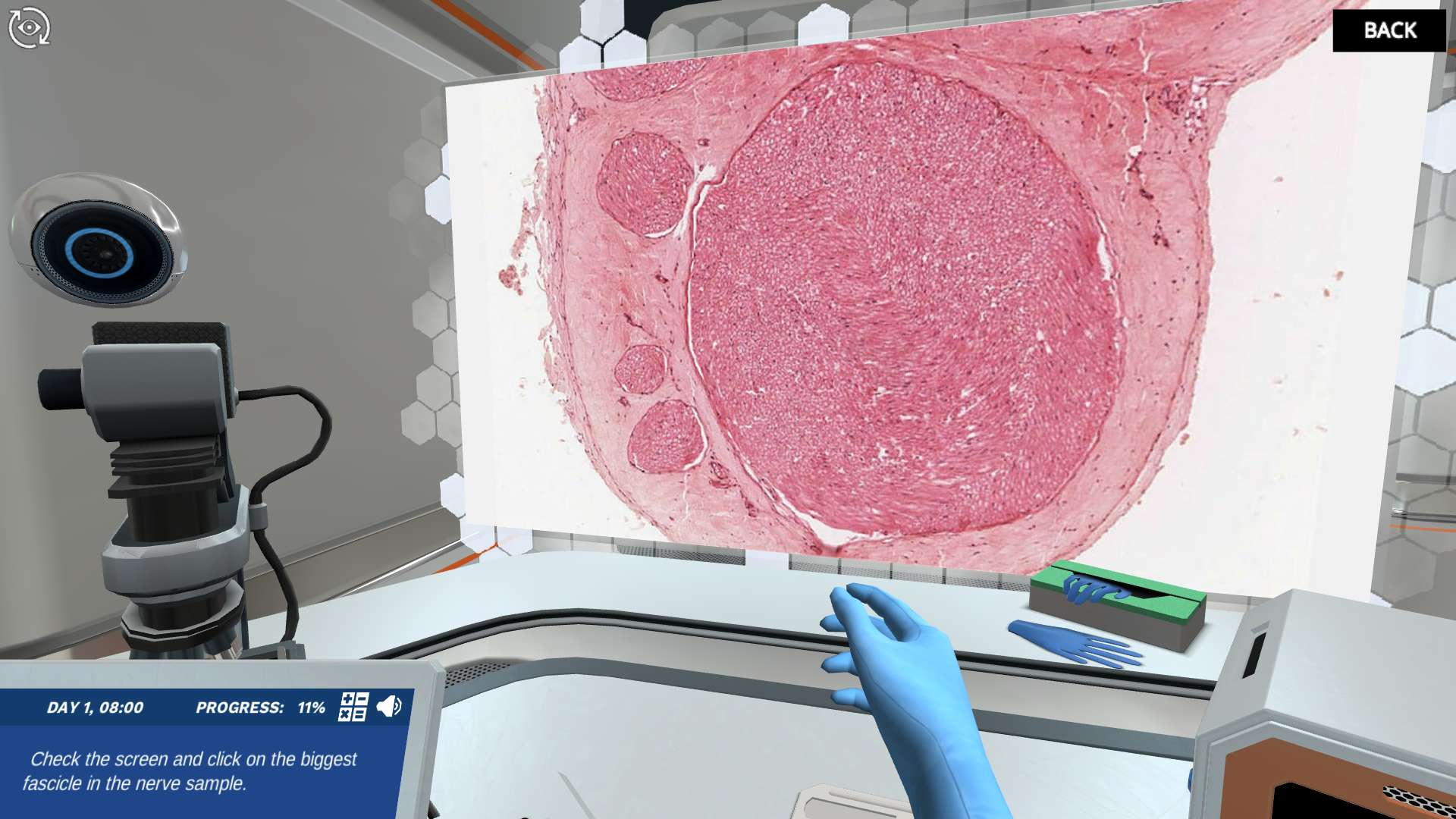Heading 1
Heading 2
Heading 3
Heading 4
Heading 5
Heading 6
Lorem ipsum dolor sit amet, consectetur adipiscing elit, sed do eiusmod tempor incididunt ut labore et dolore magna aliqua. Ut enim ad minim veniam, quis nostrud exercitation ullamco laboris nisi ut aliquip ex ea commodo consequat. Duis aute irure dolor in reprehenderit in voluptate velit esse cillum dolore eu fugiat nulla pariatur.
Block quote
Ordered list
- Item 1
- Item 2
- Item 3
Unordered list
- Item A
- Item B
- Item C
Bold text
Emphasis
Superscript
Subscript
About This Simulation
Learn about the nerves that make up the peripheral nervous system and create a working model of the system. Test out your new model by tracking a motor signal traveling from the central nervous system to the thumb!
Learning Objectives
- Detail the general structure of a nerve and relate it to its role in the peripheral nervous system
- Categorize the 12 cranial nerves by name, number, origin, and type and briefly summarize their functions
- Classify the spinal nerves by region, explain the formation of the rami, and name the 4 plexuses
About This Simulation
Lab Techniques
- Microscopy
Related Standards
- Early Stage Bachelors Level
- EHEA Second Cycle
- EHEA First Cycle
- EHEA Short Cycle
- FHEQ 6
- SCQF 9
- SCQF 10
- US College Year 1
- US College Year 2
- US College Year 3
Learn More About This Simulation
In this simulation, you will learn about the peripheral nervous system by building a model of the system. You will learn about the structure of nerves that make up the system and how they connect to the central nervous system. Can you successfully complete the challenge by connecting all 12 cranial nerves (and 31 spinal nerves) to their correct positions?
Create a nerve model
To start, you’ll answer a few questions about the structure of nerves. Take a look at a cross-section of a nerve with a microscope to learn about the layers of connective tissue that surround nerve fibers. Now it’s time to build some nerve models! You can 3D-print these models in our virtual lab, then connect them to the central nervous system.
Attach the cranial and spinal nerves
Ever wondered which nerve is responsible for the cozy feeling you get when sipping hot cocoa? In this simulation, you will. As your next step, connect the cranial nerves to the inferior of the brain and learn the function of each nerve. Once all the cranial nerves are attached, you will need to assign them a type: sensory, motor, or mixed. The final step to complete your peripheral nervous system model is to attach the correct number of spinal nerves to each region of the spine.
Track a motor signal on its journey to the thumb
To test to see if your model works, track a motor signal as it travels from the central nervous system to the thumb. On its journey to the thumb, the motor signal will encounter ventral rami and a plexus. Will your model of the peripheral nervous system be a success?
Boost STEM Pass Rates
Boost Learning with Fun
75% of students show high engagement and improved grades with Labster
Discover Simulations That Match Your Syllabus
Easily bolster your learning objectives with relevant, interactive content
Place Students in the Shoes of Real Scientists
Practice a lab procedure or visualize theory through narrative-driven scenarios


For Science Programs Providing a Learning Advantage
FAQs
Find answers to frequently asked questions.
Heading 1
Heading 2
Heading 3
Heading 4
Heading 5
Heading 6
Lorem ipsum dolor sit amet, consectetur adipiscing elit, sed do eiusmod tempor incididunt ut labore et dolore magna aliqua. Ut enim ad minim veniam, quis nostrud exercitation ullamco laboris nisi ut aliquip ex ea commodo consequat. Duis aute irure dolor in reprehenderit in voluptate velit esse cillum dolore eu fugiat nulla pariatur.
Block quote
Ordered list
- Item 1
- Item 2
- Item 3
Unordered list
- Item A
- Item B
- Item C
Bold text
Emphasis
Superscript
Subscript
Labster can be integrated within a school's LMS (Learning Management System), and students can access it like any other assignment in their LMS. If your Institution does not choose an LMS integration, students will log in to Labster's Course Manager once they have an account created. Your institution will decide the access method during the sales process.
Labster is available for purchase by instructors, faculty, and administrators at education institutions. Purchasing our starter package, Labster Explorer, can be done using a credit card if you are located in the USA, Canada, or Mexico. If you are outside of North America or are choosing a higher plan, please speak with a Labster sales representative. Compare plans.
Labster simulations are created by real scientists and designed with unparalleled interactivity. Unlike point and click competitors, Labster simulations immerse students and encourage mastery through active learning.
Labster supports a wide range of courses at the high school and university level across fields in biology, chemistry and physics. Some simulations mimic lab procedures with high fidelity to train foundational skills, while others are meant to bring theory to life through interactive scenarios.


















